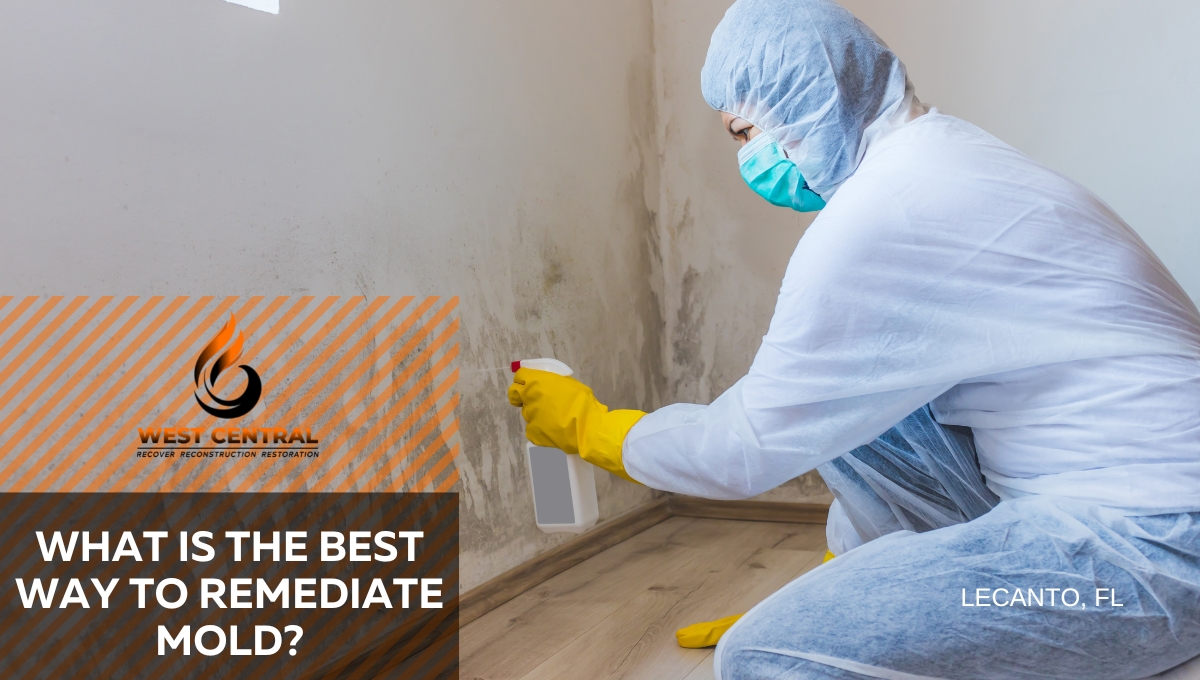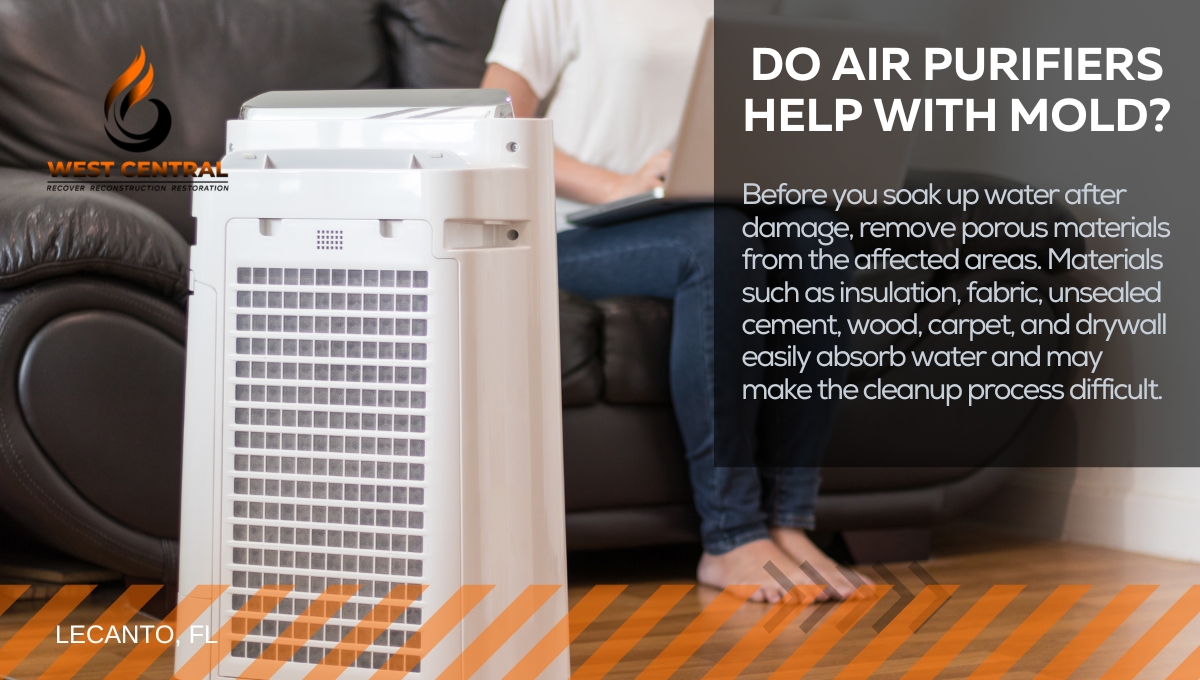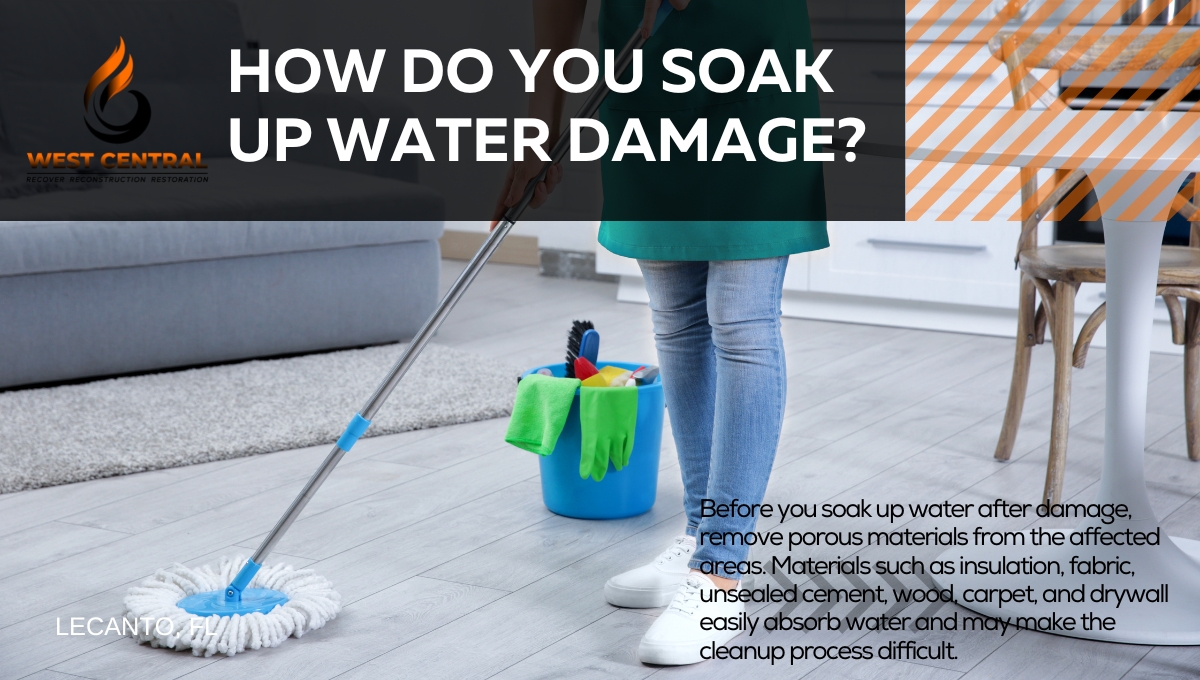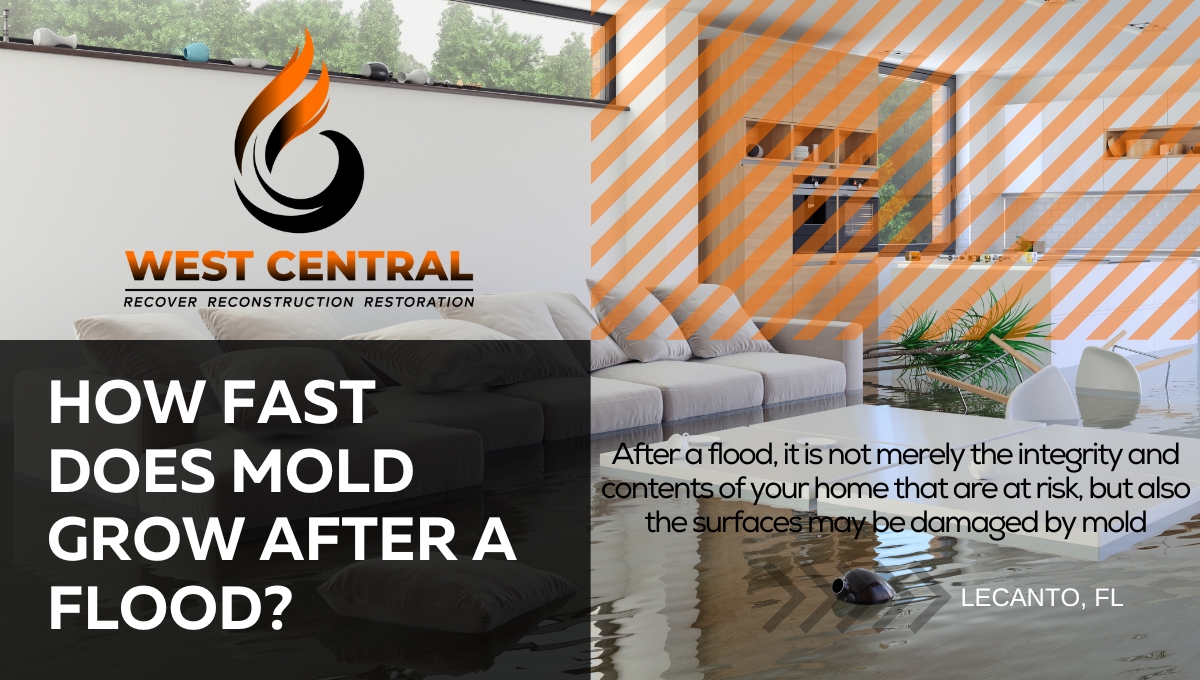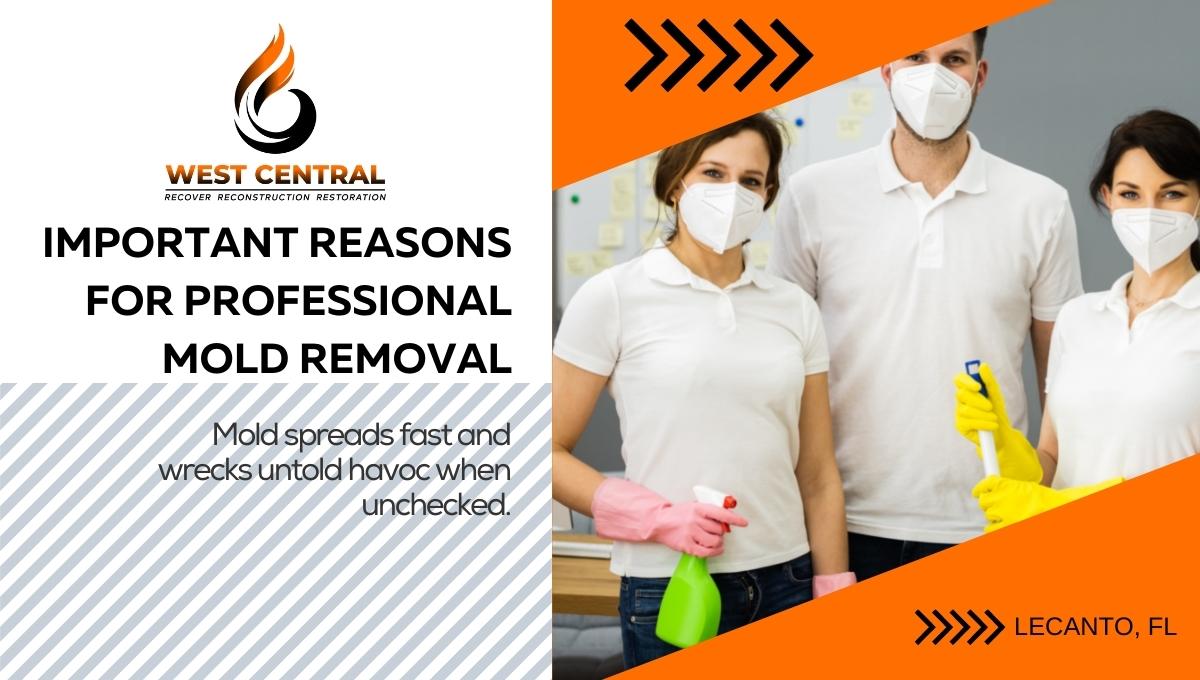Key Takeaways:
- Water damage almost always leads to mold due to the presence of mold spores, ideal temperature, darkness, availability of food, oxygen and moisture in the home.
- To prevent mold after water damage, act quickly to remove the water, dry affected areas, and document the damages for insurance.
- Professionals can provide reliable and timely water damage restoration and mold remediation services.
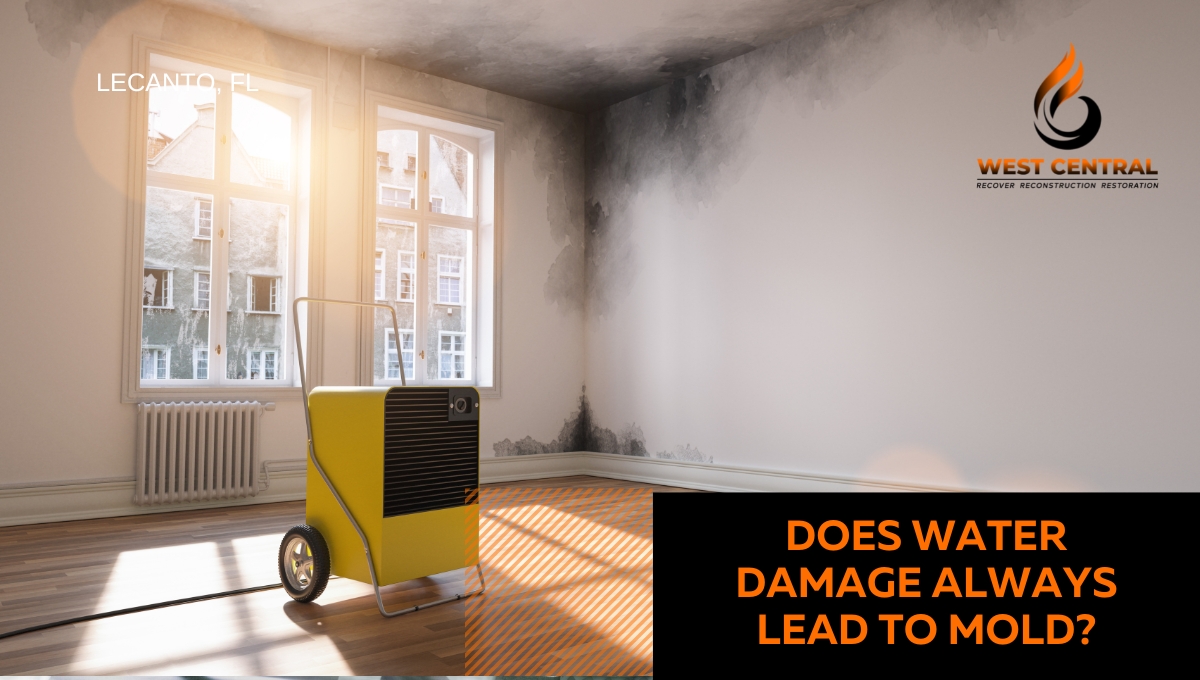 Unless you act quickly, water damage will always lead to mold. Mold loves standing water, and the wet condition allows its spores to typically grow into full-blown mold within 48 hours. If the indoor environment is dark and damp, mold starts to grow within 24 hours.
Unless you act quickly, water damage will always lead to mold. Mold loves standing water, and the wet condition allows its spores to typically grow into full-blown mold within 48 hours. If the indoor environment is dark and damp, mold starts to grow within 24 hours.
The chance of mold growth after water damage depends on three factors:
- Severity of the water damage: You may not be able to deal with a flood or a bigger plumbing issue swiftly enough to beat mold. This may allow water to stand in your home longer, and allow mold spores to grow. So, in case of severe water damage, call a professional water damage restoration service for help. They have heavy-duty water extractors and dehumidifiers that will remove water and dry up affected areas fast enough to prevent mold.
- Number of affected surfaces: An extensive water damage that affects almost all rooms in your home may be overwhelming to tackle. It may also mean your home is immediately unsafe for your stay. Now, as you wait to confirm the safety of your home or struggle to clean up the many affected areas, mold spores will take advantage. They will land on water-damaged surfaces and immediately begin to establish colonies.
- How fast you act: Mold will definitely grow in your home if water stands unchecked for more than 48 hours. And if you can’t act within 24 to 48 hours, mold may grow. That is why if you can’t extract water and dry your home within 24-48 hours, you must assume that mold has started growing.
So, why does water damage almost always lead to mold? Well, mold requires six things to grow:
- Presence of mold spores: Of course, mold spores are already floating inside and outside your home. But they won’t grow into full-blown mold until they settle in damp, porous surfaces. If you’re worried about mold spores, install air purifiers.
- Ideal temperature: Mold spores grow in a warm environment, above freezing point. Hence, mold can grow in a refrigerator, but not in a freezer—unless it isn’t working. Because mold requires a temperature above 60 degrees Fahrenheit to grow, and your home is almost always at a temperature above this, there is already sufficient warmth in your home for mold growth.
- Darkness: Mold spores die when exposed to ultraviolet (UV) light from the sun. But in darkness, the spores thrive and can grow rapidly. No matter how hard you try, you may not completely eliminate all the dark nooks and crannies of your home that can support mold growth.
- Availability of food: Without food, mold won’t grow. However, since mold can feed on a variety of things, including meat, vegetables, drywall, fabric, wood, and other material, they can’t fail to find food in your home.
- Oxygen: Mold needs oxygen for growth. Unfortunately, there is nothing you can do to stop your home from having oxygen.
- Moisture: Mold is a living fungus. It needs moisture to survive. In fact, moisture is the biggest factor that will determine whether or not mold grows in your home since other factors are almost unavoidable. In your home, moisture can come from various sources. And you need to get to the root of every moisture problem in order to prevent mold. For example, a leaking pipe under your home can continuously cause walls to be wet. Or, water left standing too long after a flood can trigger mold growth. Deal with such moisture issues swiftly to stop mold.
How do you prevent mold after water damage?
- Act quickly after the damage to remove the water and dry up affected areas. It is important to take steps at the first sign of water seeping into your home.
- If the damage is due to a leakage, turn off all water sources into your home. This will stop the internal leakage and give you enough time to fix any plumbing issues.
- Remove all water-damaged items and materials that can’t be cleaned or completely dried. All rugs, carpets, and affected furniture should be removed. Cotton fabrics soak in a lot of water, and so should be tossed as the fungus easily takes hold in them.
- Use an air conditioner or dehumidifier to remove lingering moisture and keep indoor air as dry as possible.
- Use fans to enhance air circulation. Also, open windows and doors to allow air to circulate.
- Clean and dry all surfaces, making sure to eliminate moisture or water trapped within walls, underneath floorboards, or in corners.
- Remember to document the damages using pictures and videos for your insurance.
- Practice long-term prevention by having a home protection expert inspect your home, review old pipes, and check for possible leaks.
Reliable, Timely Water Damage Restoration
Would you like to work with a reputable water damage restoration service? At West Central Equipment and Restoration, we offer prompt, comprehensive, and efficient water damage restoration. We arrive at your property soon after you call, inspect the building, spot the source of the water, and stop further influx of water. We use our sophisticated water extractors, fans, and dehumidifiers to ensure your home is clean, dry, and safe. And we locate any mold growths in all potential hiding spots and problem areas without tearing down any walls or causing more damage. Call us today for thorough water damage restoration and trustworthy mold remediation.
For more information on water damage restoration and mold remediation, visit the site “West Central Equipment and Restoration.”
References:
- “How Fast Can Mold Grow After Water Damage?” Stop Restoration, 2019, https://www.stoprestoration.com/spokane/about-us/blog/2019/september/how-fast-can-mold-grow-after-water-damage-/
- “Mold Control: Critical Tips on How to Clean Up and Prevent Mold After a Flood.” Grainger, https://www.grainger.com/know-how/business-operations/emergency-and-disaster-preparedness/kh-mold-control-critical-tips-on-how-to-clean-up-and-prevent-mold-after-a-flood
- “Does UV Light Kill Mold?” Sensorex, 2020, https://sensorex.com/2020/01/22/does-uv-light-kill-mold/

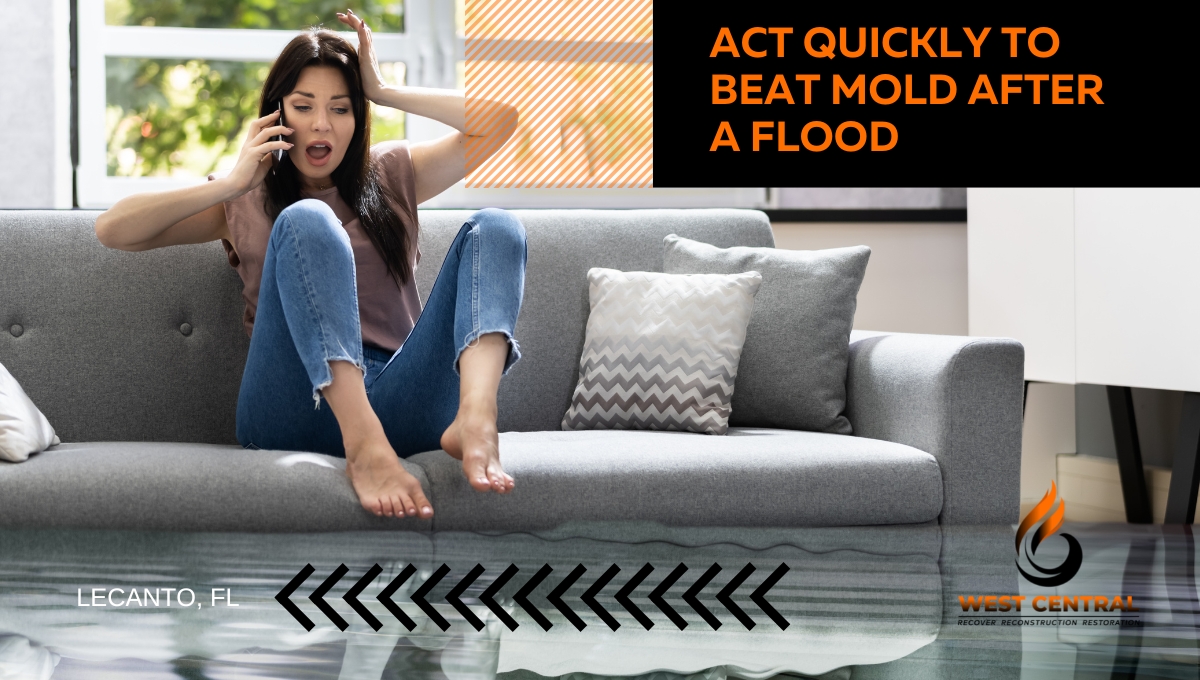
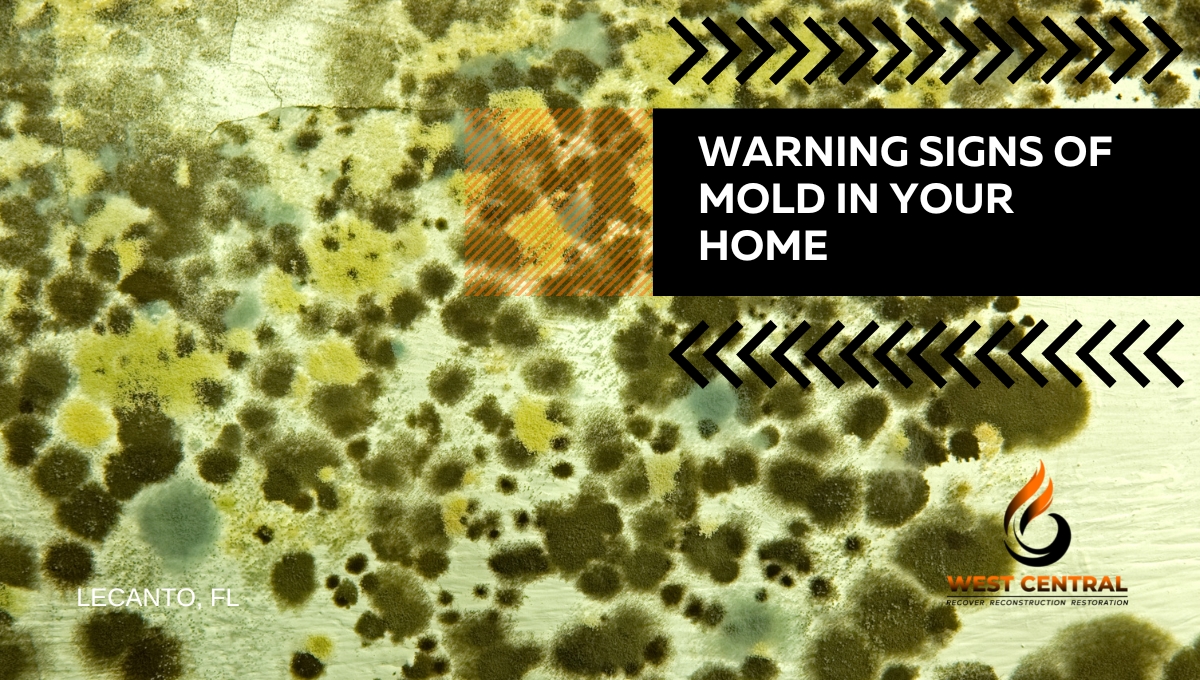
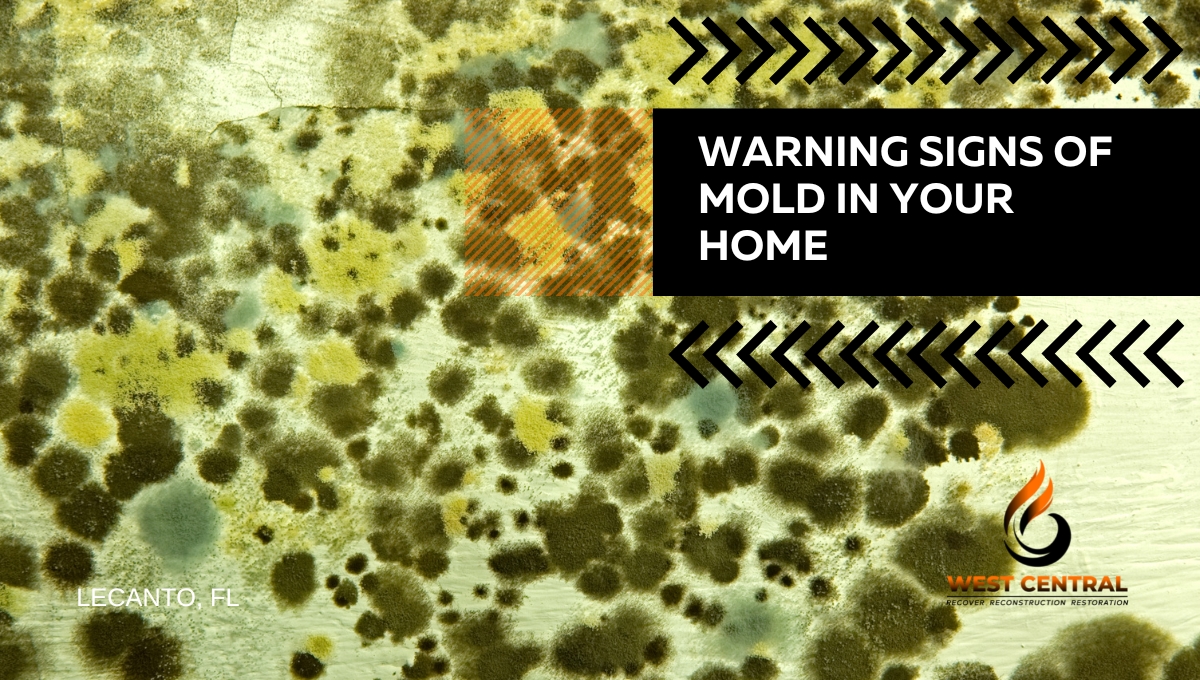 Mold is a tenacious and dangerous fungus that can start growing in the most inconspicuous areas of your home, such as in dark, damp corners, beneath floorboards, and within organic materials. However, its growth can only go unnoticed for a brief period of time, as it releases allergens, irritants, toxins, and other compounds into the air, altering the feel and smell of the indoor environment. To keep your home safe and healthy, it is essential to be aware of the warning
Mold is a tenacious and dangerous fungus that can start growing in the most inconspicuous areas of your home, such as in dark, damp corners, beneath floorboards, and within organic materials. However, its growth can only go unnoticed for a brief period of time, as it releases allergens, irritants, toxins, and other compounds into the air, altering the feel and smell of the indoor environment. To keep your home safe and healthy, it is essential to be aware of the warning 